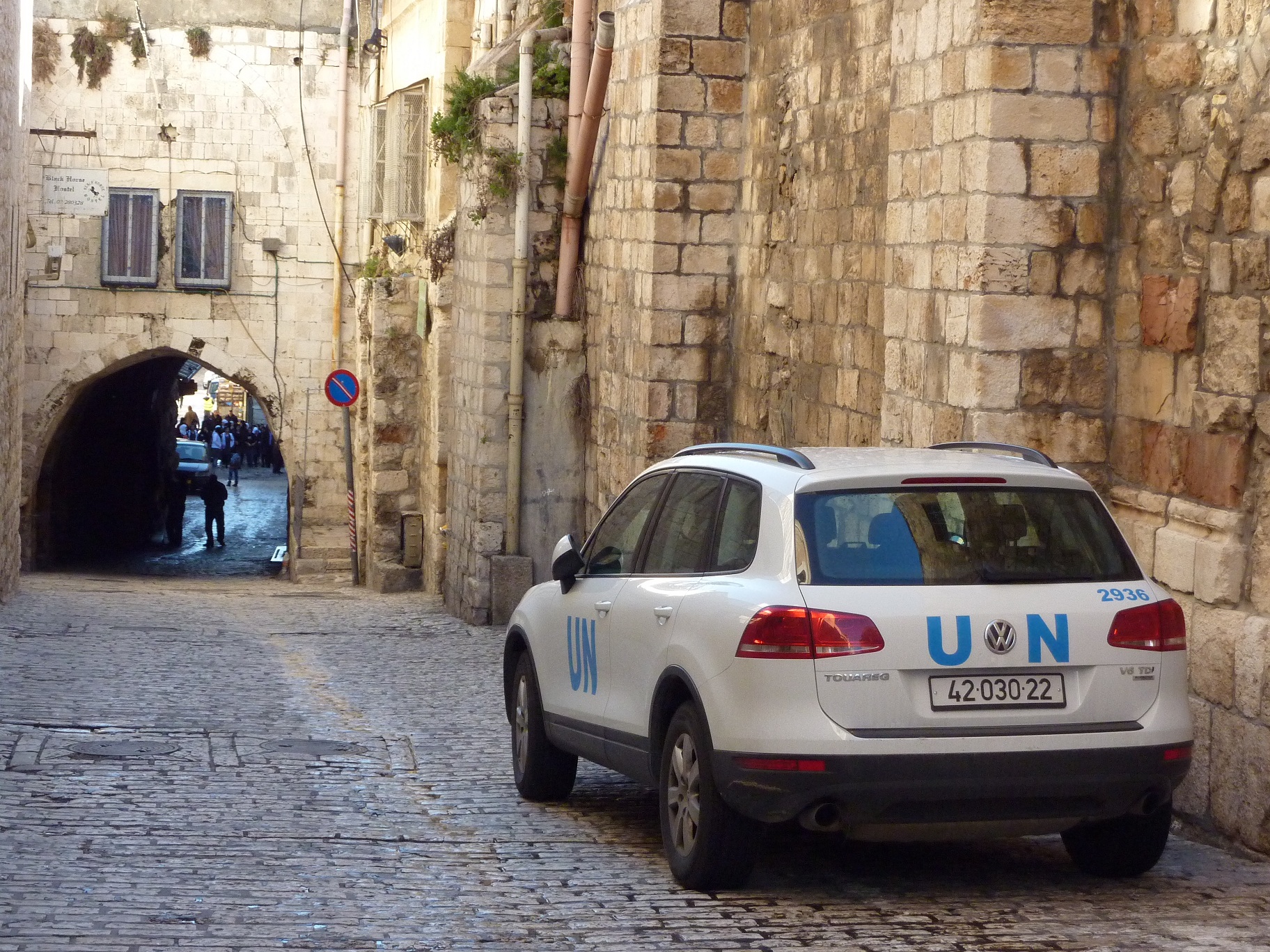 Prior to Christmas I found myself in Jerusalem, Israel – the heart of the heart of the conflict of our time.
Prior to Christmas I found myself in Jerusalem, Israel – the heart of the heart of the conflict of our time.
Here, no one agrees on anything – even the monks from various Christian denominations (Greek Orthodox, Armenians, Catholics and others) responsible for The Church of the Holy Sepulchre where Christ was crucified, argue amongst themselves on almost everything from cleaning duties to repairs. A wooden ladder has remained on a ledge just above the main entrance (see it ?) since the 19th Century – because no one can agree who has the right to take it down.
But, ironically, peacemaking is clearly big business in Jerusalem.
As we all know, if there were to be a sudden outbreak of peace here, the world would be a safer place. But, as everyone who has an opinion says, ‘it’s complicated’.
In fact, I stayed at the hotel where Hilary Clinton hatched the latest cease fire that signalled an end to the recent conflict in Gaza. Peacemakers were still on the ground. Here mediators do not inhabit the shadow lands of some legal twilight zone, rather here they wear fluro vests and drive late model white Toyota 4 by 4’s with big blue letters on the side through the narrow streets of the old walled city.
Being in Jerusalem for only the briefest of visits, am I allowed to say that I’m struck by the futility of it all?
To me, a lot of what I saw going on around me seemed an endless cycle of temporary pauses in an otherwise permanent hostile state of being. It says it all to hear Israel talk about periodically “cutting the grass in Gaza” and Palestinians referring to “aliens” who will leave The Holy Land within their lifetime.
After 60 years Israel and the Palestinians seem further apart than ever with extremist elements on both sides making it impossible to reach a compromise. The British have tried and failed. The United Nations has not fared much better when one considers that it was for this purpose, amongst others, that it was established. Currently it is the United States. However, it is difficult to see the US as a neutral mediator, for in the eyes of the Palestinians it is simply Israel’s big brother.
Rather than wrestle with the rights and wrongs of the conflict (and I broke bread with both Israelis and Palestinians in an effort to understand more), in the end the question that preoccupied me during my time in Israel was, what happens to conflicts that are unlikely to be resolved and seem impervious to well-meaning intervention?
On my last day in Jerusalem I stumbled upon the most beautiful bookshop in the world in Salah Eddin Street, East (Palestinian) Jerusalem – it was one of those well worn bookshops where Muslim students gathered to study all day lingering over a single coffee at the back of the shop. The owner didn’t seem to mind. As I browsed the bookshelves with my thick Arabic coffee in my hand I came across an old friend – Bernie Mayer’s Staying with Conflict and after a cursory skim it seemed to me to at least offer some of the answers to my question.
I quickly purchased Mayer’s book for reading on the flight that evening from Tel Aviv to Auckland via Zürich/Hong Kong.
Then, through the long night as I sat cramped up in economy, I learnt about something called enduring conflict and was challenged by new-to-me concepts like creative non-resolution.
One of the most exciting questions posed by Mayer for mediators is whether we can “…change our focus in conflict from prevention, management and resolution to anticipation, support and engagement? Can we see within the many roles we play the opportunities to work with disputants on the enduring element of conflict, not just the transient or stubborn elements? Can we change how we frame our larger role so that we are more than conflict resolution practitioners and are in fact conflict engagement specialists?”
“… enduring conflict is that aspect of a dispute that is embedded in structures, systems, values or identity and will therefore not be resolved through short-term, resolution orientated conflict interventions. Enduring conflict is long-lasting because of its nature, not because of ineffective or inappropriate efforts to resolve it. Until the roots of the conflict change, the system evolves or the identity or value based elements are profoundly transformed, the conflict will remain, although how it is manifested may vary over time”
Mayer poses the question whether, as conflict professionals, our intention should be to identify those elements of the conflict that are resolvable and focus on these or to devise ways to assist people to stay with conflict in the powerful, constructive and effective way?
And although he was speaking of global climate change, Mayer could be referring to the Middle East when he opines “… If we get stuck in a mode of thinking that equates progress with solutions, that suggests we have only two choices – to come together in agreement as a world community about how to proceed or to face disaster – then our ability to cope creatively with this challenge will be significantly, possibly fatally, impaired. Instead we have to embrace these paradoxes. We have to engage in a long-term struggle, continue to keep the dialogue open and seize partial (but not necessarily small-scale) solutions, agreements and directions as they emerge, knowing that no one of them will fix the problem and that some may eventually prove counter-productive.”
To my surprise, Mayer then went on to explain how constructive escalation was sometimes essential in enduring conflicts – “when a serious concern is being ignored, when unacceptable behaviour continues, when faced with oppressive conditions or escalating collusion, disputants sometimes have no alternative but to escalate a conflict or accept the unacceptable… The conscious use of escalation remains an essential tool in conflict, without which constructive engagement is often impossible. The problem is that once disputants use escalation, they often lose sight of its strategic and limited purpose. Rather than trying to change behaviour, they try to change people. Rather than seeking a more productive reciprocal power relationship, they want revenge. Rather than constructive engagement, they seek victory.”
As I translated this to the launching of rockets against Tel Aviv and Jerusalem and the inevitable retaliatory cutting of the grass in Gaza, I realised that both sides would be quick, if asked, to legitimise their activity as exactly this – the very essence of constructive escalation.
“… and that while our natural instinct as conflict professionals is often to resist or end escalation as quickly as possible, and as hard as it is to escalate in proportional and tactically sophisticated ways, it is sometimes the key to moving a conflict situation forward”.
Now all we need is the constructive engagement…
________________________
To make sure you do not miss out on regular updates from the Kluwer Mediation Blog, please subscribe here.
Profile Navigator and Relationship Indicator
Access 17,000+ data-driven profiles of arbitrators, expert witnesses, and counsels, derived from Kluwer Arbitration's comprehensive collection of international cases and awards and appointment data of leading arbitral institutions, to uncover potential conflicts of interest.
Learn how Kluwer Arbitration can support you.


